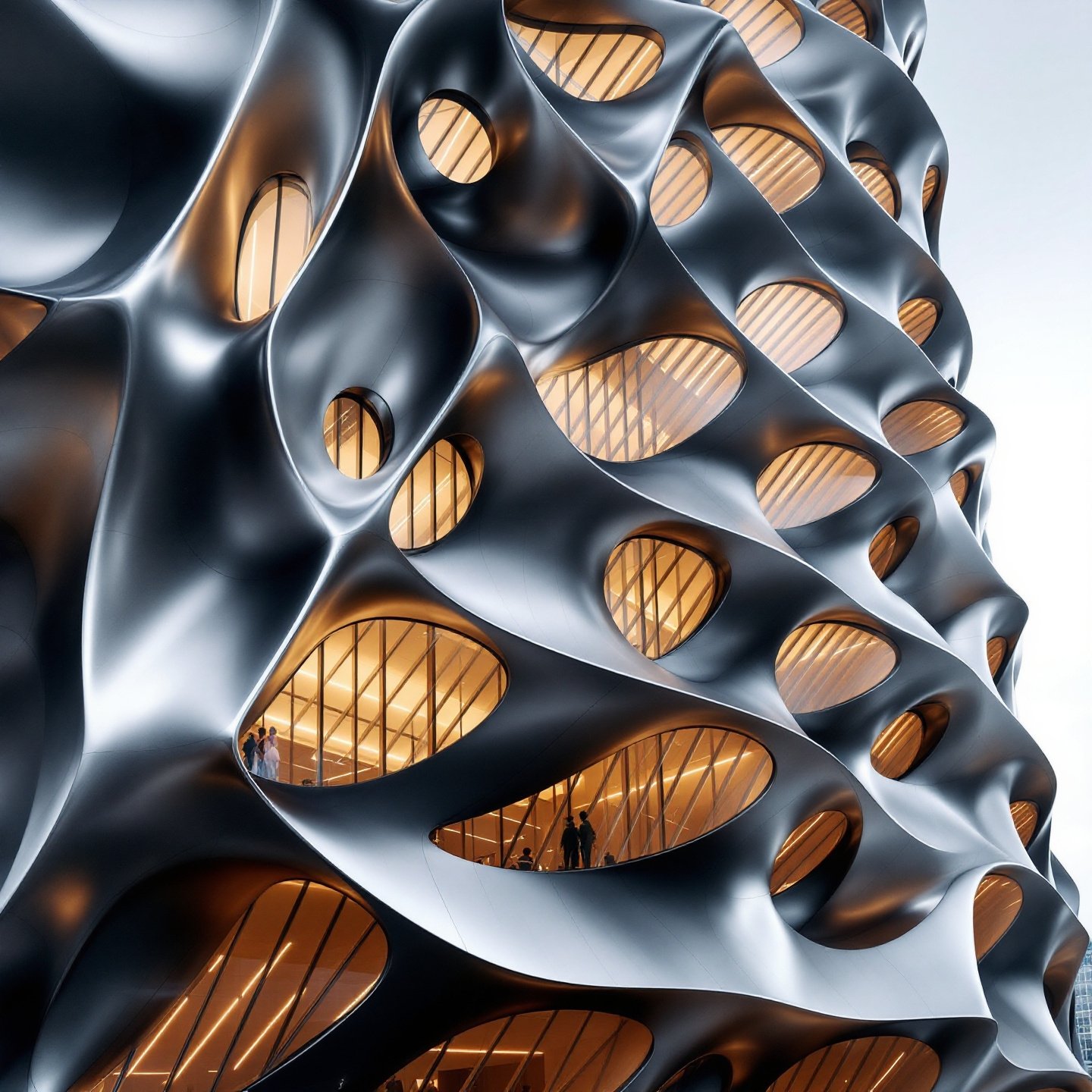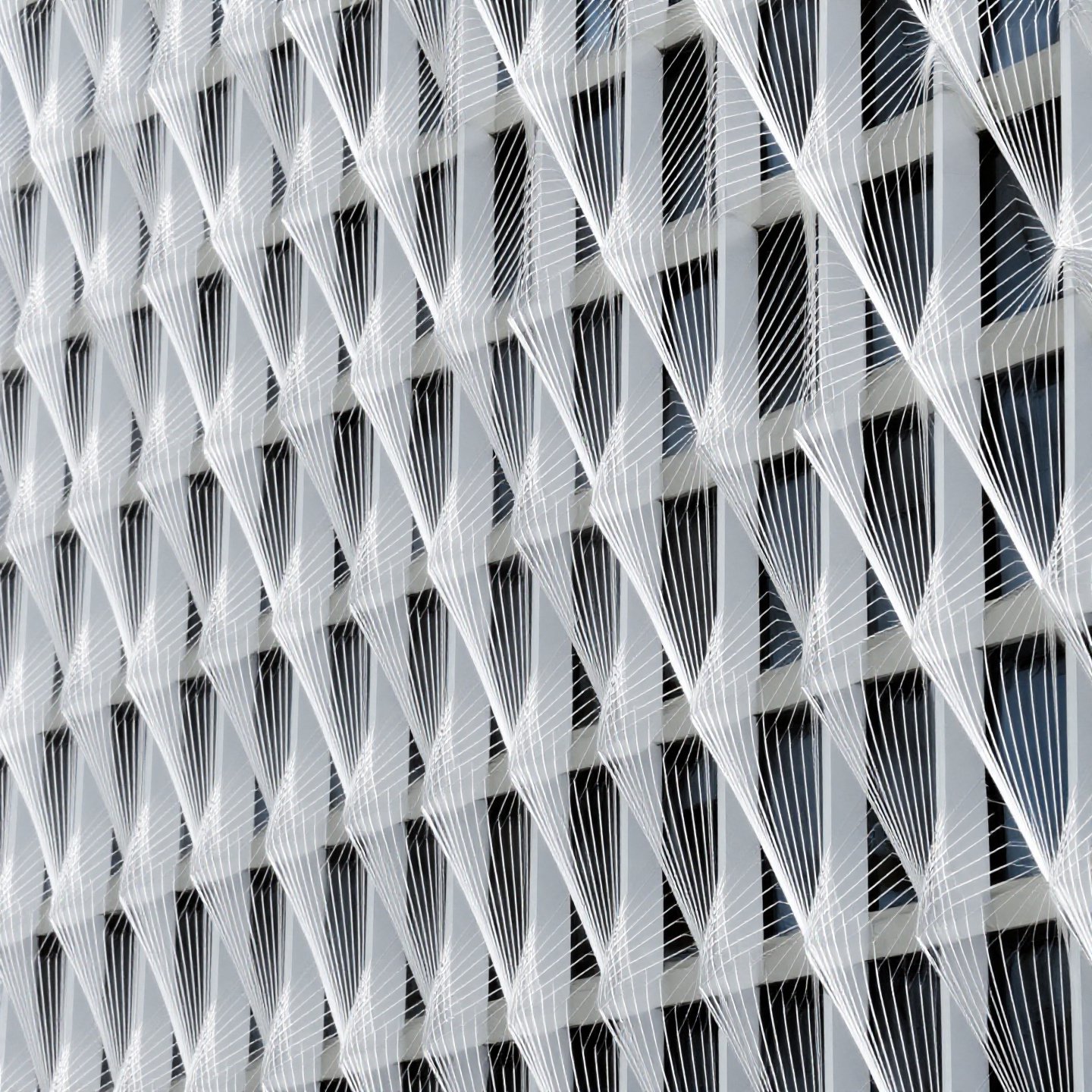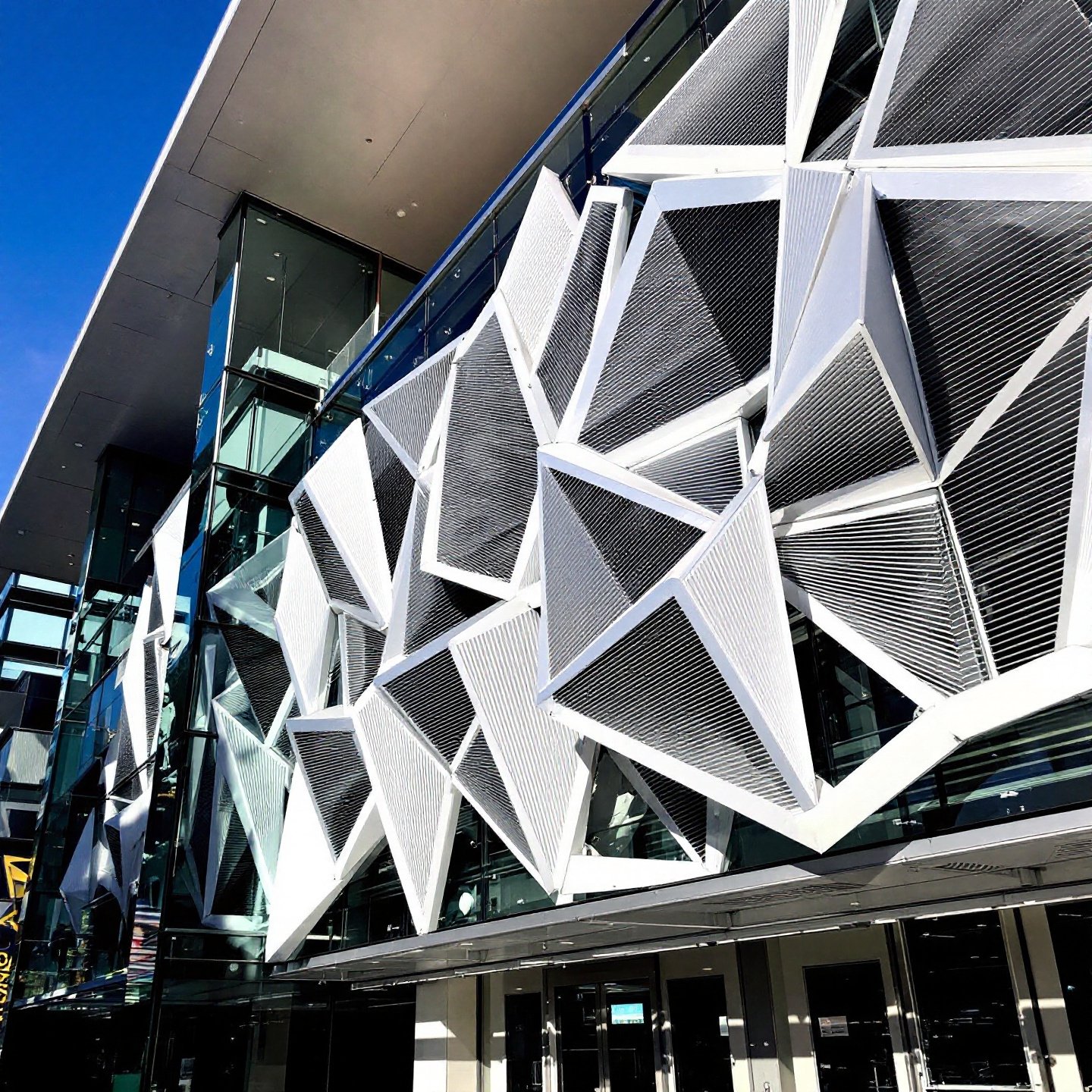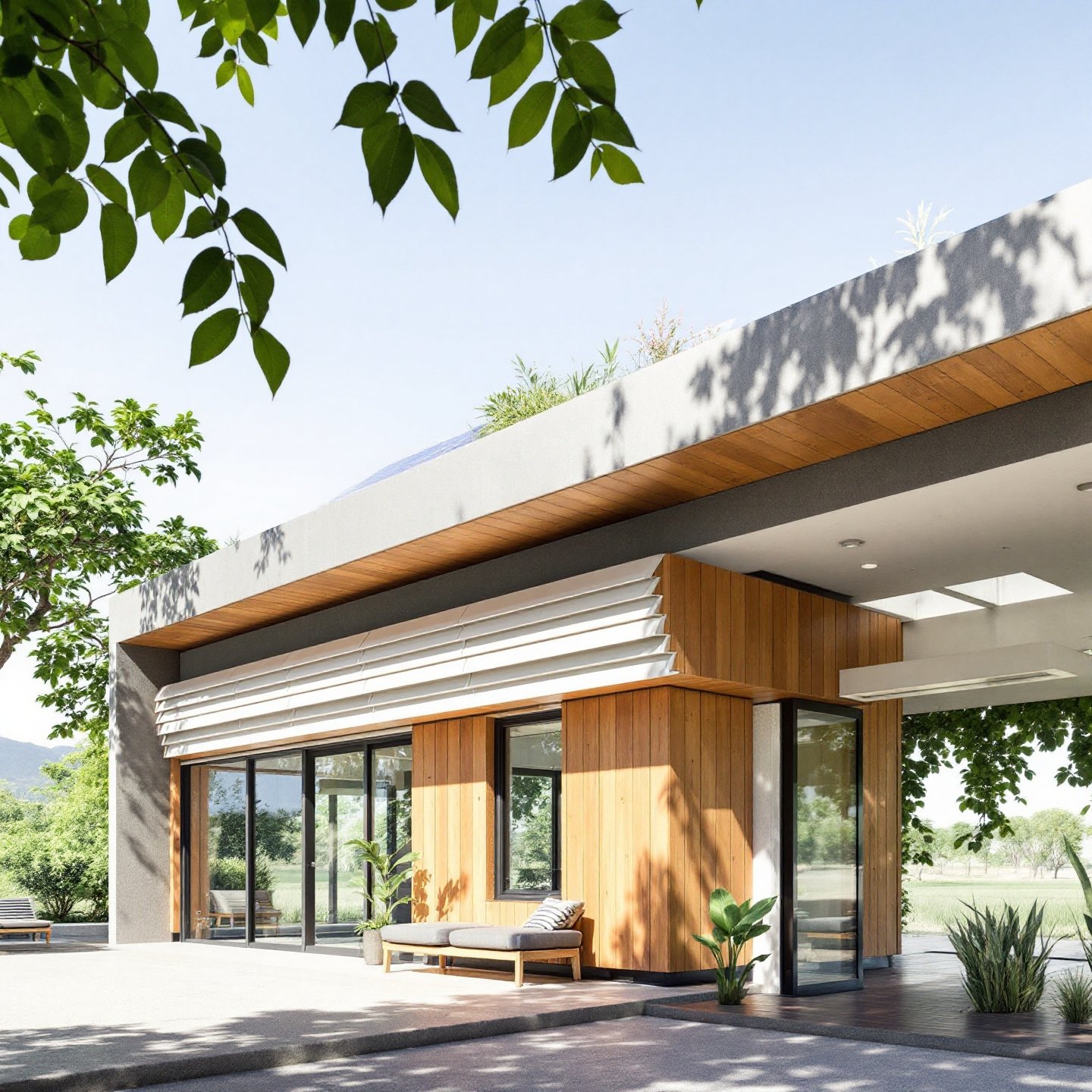
In the realm of modern architecture, aluminium louvres have emerged as a pivotal element, blending functionality with aesthetic allure. These versatile components, characterized by their angled slats, are designed to optimize airflow, provide protection from the elements, and enhance the visual appeal of buildings. Imagine walking through a cityscape where each structure not only stands resilient against nature's whims but also captivates with its sleek design. This is where aluminium louvres truly shine.
Aluminium louvres are a popular choice in architectural aluminium systems due to their lightweight nature, durability, and design flexibility. Their applications span across various sectors, including commercial, residential, and industrial projects. Whether it's controlling airflow in a bustling urban office or adding a touch of elegance to a modern home, these louvres offer unparalleled adaptability.
Enter Comar, a leading name in the architectural aluminium systems industry. As the largest British, privately owned aluminium systems company in Europe, Comar is renowned for its innovative solutions and commitment to quality. Their extensive range of aluminium louvre systems is designed to meet diverse architectural needs, ensuring both performance and aesthetic excellence. With Comar's expertise, architects can confidently integrate aluminium louvres into their projects, knowing they're backed by a company dedicated to redefining what aluminium can achieve in architecture.
By choosing aluminium louvres from Comar, architects not only enhance their designs but also contribute to sustainable building practices. The recyclability of aluminium aligns perfectly with the growing emphasis on eco-friendly construction, making it a preferred choice for forward-thinking designers. As you delve deeper into the world of aluminium louvres, you'll discover how Comar's solutions can transform architectural visions into reality.

When you consider incorporating aluminium louvres into your architectural design, you’ll notice their remarkable benefits, starting with their inherent durability. Aluminium, known for its impressive strength-to-weight ratio, offers a robust solution that withstands the test of time. Unlike other materials that may succumb to rust or corrosion, aluminium's natural resistance ensures that these louvres maintain their integrity and appearance with minimal maintenance, making them a practical and cost-effective choice for long-term projects.
One of the standout features of aluminium louvres is their lightweight nature. Being approximately 33% lighter than steel, these louvres are easier to handle and install, reducing labor costs and time on site. Their lightweight properties do not compromise strength, as they can endure significant environmental stresses without bending or breaking. This makes them an ideal choice for structures where both strength and ease of installation are critical considerations.
Aluminium louvres boast excellent corrosion resistance, a crucial factor for structures exposed to the elements. This resistance stems from the formation of a protective aluminium oxide layer when exposed to air, preventing further oxidation. Consequently, these louvres require minimal upkeep, sparing architects and builders from frequent maintenance tasks and ensuring that the louvres retain their aesthetic and functional qualities over time.
From a design perspective, aluminium louvres offer unparalleled flexibility. They can be customized in various shapes, sizes, and finishes, allowing architects to tailor them to specific project requirements. Whether aiming for a sleek, modern look or a more traditional style, aluminium louvres can be adapted to complement any architectural vision. Their aesthetic versatility is further enhanced by the ability to incorporate different colors and textures, making them a preferred choice for projects seeking to make a visual statement.
Moreover, the aesthetic aluminium louvres contribute to the overall energy efficiency of a building. By controlling the amount of sunlight and heat entering a space, they help regulate indoor temperatures, reducing the reliance on artificial heating and cooling systems. This not only enhances the comfort of the building's occupants but also aligns with sustainable building practices.
In summary, the use of durable aluminium louvres in modern architecture offers numerous benefits, from their lightweight and corrosion-resistant properties to their design flexibility and aesthetic appeal. These qualities make them an invaluable component in creating structures that are not only functional but also visually captivating, ensuring that they remain a staple in architectural design for years to come.
When it comes to innovative architectural solutions, Comar stands out with its comprehensive range of aluminium louvre systems. These systems are designed to meet diverse architectural needs, offering both functionality and aesthetic appeal. Imagine transforming a building facade into a dynamic canvas that not only enhances visual impact but also optimizes environmental performance. This is the promise that Comar delivers with its advanced louvre systems.
Comar's louvre systems come in a variety of designs and configurations, catering to different architectural styles and functional requirements. Whether you're looking for fixed louvres for a sleek, streamlined appearance or adjustable models for dynamic light and air control, Comar provides solutions that can be tailored to meet specific project demands. For instance, the Comar-DucoClose G 35Z Louvre Wall Grille offers an adjustable design with Z-shaped blades, ideal for intensive ventilation needs (Source) .
Understanding that each architectural project is unique, Comar offers extensive customization options for its aluminium louvres. Architects can choose from various blade shapes, sizes, and finishes to ensure that the louvres complement the overall design vision. This flexibility allows for the creation of bespoke solutions that seamlessly integrate with the architectural language of the building. Moreover, Comar's systems can be manufactured to the precise dimensions required, ensuring a perfect fit and optimal performance.
Comar's aluminium louvre systems are designed to integrate effortlessly with other building systems, such as windows and curtain walls. This compatibility ensures that architects can achieve a cohesive aesthetic while maintaining high performance standards. The systems are engineered to provide effective solar shading and ventilation, contributing to the building's energy efficiency and occupant comfort.
Incorporating Comar's louvre systems into your architectural projects not only enhances the building's aesthetic value but also aligns with sustainable design principles. By facilitating natural ventilation and reducing the need for artificial climate control, these systems play a crucial role in achieving energy-efficient buildings.
As you consider your next architectural project, imagine the possibilities with Comar's custom aluminium louvres. With their innovative designs and commitment to quality, Comar continues to lead the way in architectural aluminium systems, offering solutions that are both practical and visually stunning. In the subsequent sections, we will explore how these systems can be applied in various building designs, further showcasing their versatility and impact.

In modern architecture, aluminium louvres have become indispensable, offering a multitude of applications that enhance both the functionality and aesthetics of buildings. Imagine walking into a space where the air feels fresh and the light is perfectly diffused, all thanks to the strategic use of aluminium louvres. From ventilation to sun shading, these versatile structures play a critical role in optimizing building performance.
Ventilation louvres are specifically designed to facilitate airflow, making them ideal for environments that require consistent air circulation. These louvres are often used in industrial settings, where maintaining air quality is crucial. By allowing fresh air to enter while keeping rain and debris out, they ensure a healthy indoor environment. Comar’s range of ventilation louvres, such as the Comar-DucoWall Classic, exemplifies how effective design can meet functional needs (Source) .
Sun shading louvres are engineered to control the amount of sunlight entering a building, thereby reducing glare and heat gain. This application is particularly beneficial in office buildings and educational facilities, where controlling natural light is essential for comfort and productivity. By strategically blocking excessive sunlight, these louvres help maintain a pleasant indoor climate and contribute to energy savings. The Comar-DucoSun Ellips, with its elliptical blades, is a prime example of how sun shading can be both functional and stylish.
Beyond their functional benefits, aluminium louvres also enhance the visual appeal of a building's facade. They offer architects the flexibility to create dynamic and visually striking designs that stand out. Whether used in residential or commercial projects, these louvres can transform a plain exterior into an architectural masterpiece. Notable projects like the modern facade of the XYZ Building in London showcase how Comar’s aluminium louvres can be used to achieve stunning results (Source) .
As you can see, the applications of aluminium louvres in building design are vast and varied, offering solutions that meet both practical and aesthetic demands. In the next section, we will delve into how these louvres contribute to energy efficiency and sustainability, further highlighting their value in contemporary architecture.

In an era where sustainability is paramount, the integration of aluminium louvres in architectural design offers substantial energy efficiency and environmental benefits. Imagine a building that naturally regulates its temperature and lighting, significantly reducing its carbon footprint. This is the promise of energy-efficient louvres.
Aluminium louvres play a pivotal role in enhancing a building's energy efficiency. By controlling the amount of sunlight and heat entering a building, these louvres minimize the need for artificial heating and cooling systems. For instance, during peak sunlight hours, louvres can be angled to block direct sunlight, thereby reducing heat gain and the subsequent demand on air conditioning systems. This not only lowers energy consumption but also cuts down on cooling costs, making them an economically viable choice for modern buildings.
Moreover, aluminium louvres optimize natural lighting, allowing for maximum daylight penetration without the accompanying heat. This reduces the reliance on artificial lighting during the day, further lowering energy usage. By providing effective glare control, they also enhance occupant comfort, reducing the need for additional lighting adjustments.
The sustainability of aluminium louvres extends beyond energy efficiency. Aluminium is renowned for its recyclability, making it an environmentally responsible choice. At the end of their life cycle, aluminium louvres can be recycled without any loss of quality, minimizing waste and conserving resources. This property aligns with global sustainability goals and supports the development of eco-friendly buildings.
By incorporating sustainable aluminium louvres into their designs, architects contribute to reducing the environmental impact of buildings. These louvres not only support energy efficiency but also promote a greener future by reducing reliance on HVAC systems and enhancing natural ventilation. This aligns with the growing trend of sustainable architecture, ensuring that buildings are both eco-conscious and cost-effective.
In summary, the use of energy-efficient and sustainable aluminium louvres in architectural design offers significant benefits, from reducing energy consumption to promoting environmental stewardship. As architects continue to push the boundaries of sustainable design, aluminium louvres stand out as a key component in achieving these goals, paving the way for a more sustainable future.
Installing aluminium louvres is a straightforward process that, when done correctly, ensures both aesthetic appeal and functional efficiency. Whether you're a seasoned professional or a DIY enthusiast, understanding the key steps and maintenance practices is crucial to maximizing the lifespan and performance of these architectural elements.
Before beginning the installation, a thorough site assessment is essential. This involves evaluating the building's structure and determining the best positioning for the louvres to achieve optimal airflow and sun shading. Once the site is prepared, ensure that you have all necessary materials and tools on hand, such as mounting brackets, screws, and a level for alignment.
The installation process can be broken down into clear steps:
For more detailed guidance, refer to comprehensive installation resources such as the Sanlak Installation Guide .
Regular maintenance is key to ensuring the longevity of aluminium louvres. Begin by cleaning the louvres periodically to remove dust, dirt, and debris. Use a soft-bristle brush or a hose with a gentle spray to clean the surfaces, avoiding high-pressure water that could damage the louvres' finish.
Lubricating moving parts, such as hinges and joints, is also important to maintain smooth operation. Use a silicone-based lubricant to avoid attracting dust and dirt. Additionally, inspect the louvres for any signs of damage, such as bent slats or loose fittings, and address these issues promptly to prevent further deterioration.
For comprehensive maintenance tips, including seasonal checks and professional inspection recommendations, resources like the Solaris Maintenance Guide offer valuable insights.
By adhering to these installation and maintenance practices, you can ensure that your aluminium louvres not only enhance your building's design but also provide lasting performance and efficiency. In the following section, we will summarize the key takeaways and explore how Comar's solutions can be integrated into your future projects.
As we draw this exploration to a close, it becomes clear that aluminium louvres, particularly those offered by Comar, provide a myriad of benefits that align with modern architectural needs. From their durability and lightweight properties to their corrosion resistance and design flexibility, aluminium louvres stand out as a crucial element in contemporary building design. They offer architects the freedom to create structures that are both functional and visually captivating, ensuring that buildings remain resilient and aesthetically pleasing over time.
Comar's extensive range of aluminium louvre systems exemplifies innovation in architectural design. With diverse designs and customizable options, these systems cater to various architectural styles and functional demands. Whether it's enhancing ventilation, providing sun shading, or adding aesthetic appeal to facades, Comar's solutions are versatile and effective. Their integration with other building systems further underscores their value, making them a preferred choice for architects seeking to achieve cohesive and efficient designs.
Moreover, the environmental benefits of aluminium louvres cannot be overstated. Their role in enhancing energy efficiency and supporting sustainable building practices is paramount in today's eco-conscious world. By reducing reliance on HVAC systems and promoting natural ventilation, these louvres contribute significantly to creating energy-efficient and environmentally friendly buildings.
As you consider incorporating aluminium louvre solutions into your projects, Comar's offerings should be at the forefront of your considerations. Their commitment to quality and innovation ensures that you receive products that not only meet but exceed expectations. Additionally, exploring Shengxin Aluminum's products could provide complementary solutions, given their compatibility with Comar's systems. Shengxin's extensive production capabilities and high-quality aluminium profiles make them an excellent partner for projects requiring diverse and precise architectural components.
In conclusion, embracing aluminium louvres, particularly from Comar, offers architects a pathway to achieving architectural excellence. By integrating these systems into your designs, you can create buildings that are not only beautiful and functional but also aligned with the principles of sustainability and energy efficiency. As you embark on future projects, consider the transformative potential of aluminium louvres and the complementary strengths of Shengxin Aluminum, ensuring that your architectural visions become enduring realities.
Aluminium louvres are angled slats used in buildings for airflow, sun control, and aesthetics. They are lightweight, durable, and customizable, making them ideal for various architectural applications.
Aluminium louvres control sunlight and heat entry, reducing reliance on HVAC systems. This enhances natural ventilation and lighting, lowering energy consumption and costs.
Comar's louvre systems offer diverse designs, customization, and integration with other building systems, ensuring high performance and aesthetic appeal in architectural projects.
Installation involves site assessment, precise marking, and secure attachment. Maintenance includes regular cleaning and lubrication to ensure longevity and performance.
Aluminium louvres offer durability, corrosion resistance, and design flexibility, making them a sustainable choice that enhances both functionality and aesthetics in architecture.
 serviço on-line
serviço on-line 0086 136 3563 2360
0086 136 3563 2360 sales@sxalu.com
sales@sxalu.com +86 136 3563 2360
+86 136 3563 2360